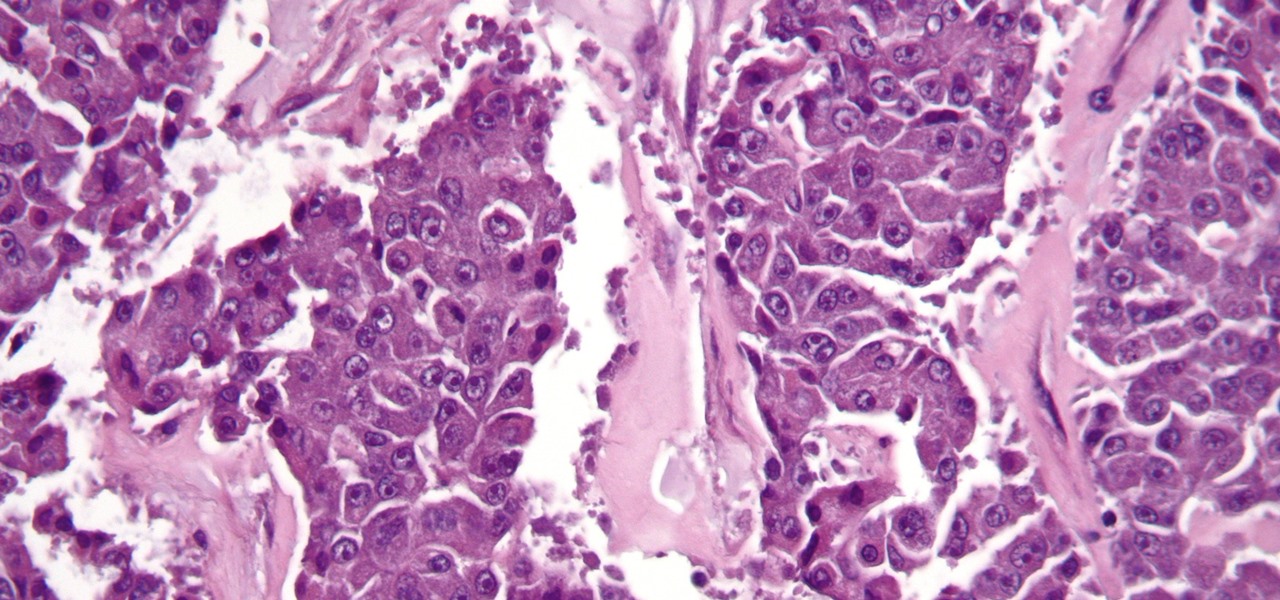The search for a cancer treatment that selectively finds and kills only the cancerous cells has just made a giant leap forward.
A new study published in Nature Communications, by a group of researchers from the August Pi i Sunyer Biomedical Research Institute, Barcelona Institute of Science and Technology, and Hospital del Mar Medical Research Institute in Spain, describes an innovative strategy they developed to get adenovirus to specifically target cancer cells—without attacking healthy cells.
Scientists have used several different tactics to get viruses to kill cancer cells.
Oncolytic viruses literally burst cells apart to kill them. Some oncolytic viruses, like Newcastle disease virus (an avian virus) don't cause disease in humans, but naturally find cancer cells and multiply within them, bursting them and killing them. Some viruses have been genetically engineered so that they can only replicate in cancer cells, like some measles viruses. Other viruses carry chemotherapy drugs to the cancer cells.
The goals of using viruses to treat cancer is the same in each case—to specifically find the cancer cells and kill them, without killing healthy cells and without side effects. Targeted killing is the potential benefit and hope for viral cancer therapy.
A Clever Process Targets Virus to Cancer Cells
The new research focuses on a set of proteins called cytoplasmic polyadenylation element-binding proteins (CPEBs). These CPEBs control genes involved in producing proteins whose role in the body is to maintain cells' ability to grow, function properly, and repair damage. A type of CPEB called CPEB1 is expressed in many types of normal cells.
The regulation of CPEB genes are sometimes disturbed, and when this occurs—for unknown reasons—it results in the inability of cells to repair damage and contributes to the development of cancer. This "dysregulation" results in lower levels of CPEB1 protein in cancer cells and increases in a type of CPEB protein called CPEB4.
When high levels of CPEB4 protein are present in cells, studies have found an increase in tumor growth, increased blood vessel growth to supply blood to the tumor, and decreased survival of patients. High levels of CPEB4 protein has been found in pancreatic ductal adenocarcinoma, colorectal cancer, and glioblastoma tumors of the brain.
The researchers took advantage of this imbalance in types of CPEB proteins in healthy versus cancer cells to genetically engineer an adenovirus that only attacks cells with high levels of CPEB4 and low CPEB1, so the result is that the virus only attacks the tumor cells and not the normal cells.
The new research showed that targeting modified adenovirus to CPEB4-bearing cells worked in pancreatic cells cultured in the lab and in mouse tumor models. The viruses found the cells, entered them, multiplied inside them and burst the cancer cells when the viral particles were released, with the potential to infect and kill more cancer cells.

This isn't the first genetically modified virus developed—or in development— for the treatment of cancer. The first genetically modified oncolytic live herpes virus treatment was approved by the Food and Drug Administration in 2015 for the treatment of a skin cancer called melanoma.
Presently, that herpes virus is the only virus approved to treat cancer. Unlike the adenovirus developed by the group of Spain-based researchers, the herpes virus must be injected directly into the skin cancer. The modified adenovirus used in the new study finds the cancer cells on its own and kills them—and it spares the healthy cells.
Exploiting the differences between normal cells and cancer cells isn't necessarily new—genetic tumor markers like mutations in the BRAF gene and increased Her2 protein have been used as targets for colon and breast cancer chemotherapy, respectively, for years. But even targeted chemotherapeutic agents are toxic drugs with serious side effects.
Combining the ability of a virus that can find a cancer cell it is genetically programmed to find, like CPEB4 cells, and kill it in the way this type of virus kills cells—by blowing them up—may be the perfect combination of selecting only cancer cells and killing them effectively.
The benefit of this system doesn't stop there, though. The virus doesn't just make one round of cancer cell killing. It's the therapy that keeps on giving. Newly replicated cells are released when they kill the cancer cells and go on to seek out other CPEB4 cells and kill them as well.
This novel approach to targeting viruses to cancer cells can open up more research into ways differences in cancer cell proteins can be targeted for killing by genetically modified viruses.
"Since CPEB4 is overexpressed in several tumors, this oncoselective strategy may be valid for other solid tumors," said the study authors, suggesting the work has just begun on this promising new treatment.
Just updated your iPhone? You'll find new emoji, enhanced security, podcast transcripts, Apple Cash virtual numbers, and other useful features. There are even new additions hidden within Safari. Find out what's new and changed on your iPhone with the iOS 17.4 update.



























Be the First to Comment
Share Your Thoughts